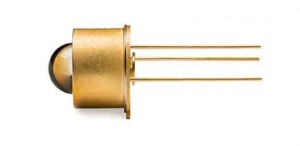Groundbreaking High-Performance UVC LED Available for Spectroscopic Applications in Analytical and Life Sciences Instrumentation
GREEN ISLAND, N.Y., June 10, 2014 – Crystal IS, a leading developer of high-performance ultraviolet (UVC) LEDs, announced availability of Optan. The first commercial semiconductor based on native Aluminum Nitride (AIN) substrates, Optan provides a unique technology platform for increased detection sensitivity, essential for analytical and life sciences instrumentation—from monitoring of chemicals in pharma manufacturing to drinking water analysis.
 The Optan product is a breakthrough for design engineers looking to overcome limitations associated with traditional UV lamps, including deuterium and xenon flash lamps. As an enabling technology, Optan allows developers to fully exploit the power of UV-based technology to improve productivity, increase accuracy and create greater flexibility in product designs.
The Optan product is a breakthrough for design engineers looking to overcome limitations associated with traditional UV lamps, including deuterium and xenon flash lamps. As an enabling technology, Optan allows developers to fully exploit the power of UV-based technology to improve productivity, increase accuracy and create greater flexibility in product designs.
“This is an exciting time for Crystal IS and an achievement for the semiconductor industry as a whole,” said Larry Felton, CEO of Crystal IS. “Optan will help instrument manufacturers build smaller, more powerful tools and products with a lower overall system cost. We look forward to the scientific and environmental contributions their new products will provide.”
The superior light output and spectral quality of the Optan UVC LED technology, made possible by the unique, low defect AIN substrate, delivers best-in-class reliability, and longer lifetimes, a game changer for life sciences and analytical instrumentation, including environmental monitoring.
Immediate use cases include:
- HPLC (high-performance liquid chromatography), a powerful tool in analysis for detecting chemicals and compounds in life sciences.
- Spectrometers, used in multiple applications in testing and analysis across biotech, life sciences and environmental monitoring.
- Water quality monitoring sensors, becoming increasingly important for detecting chemicals in water from fracking, water security and the use of treated wastewater.
The Optan LEDs are currently available in peak wavelengths from 250 nm to 280 nm and power bins from 0.5 mW to 2 mW, ideal for spectroscopic applications because of their high spectral quality and reliability. Full availability for all bins under 3 mW is anticipated for next quarter with higher power bins (3-4 mW) available this Fall, 2014.
For more information on Optan specs and availability please visit: http://www.cisuvc.com/contact.






